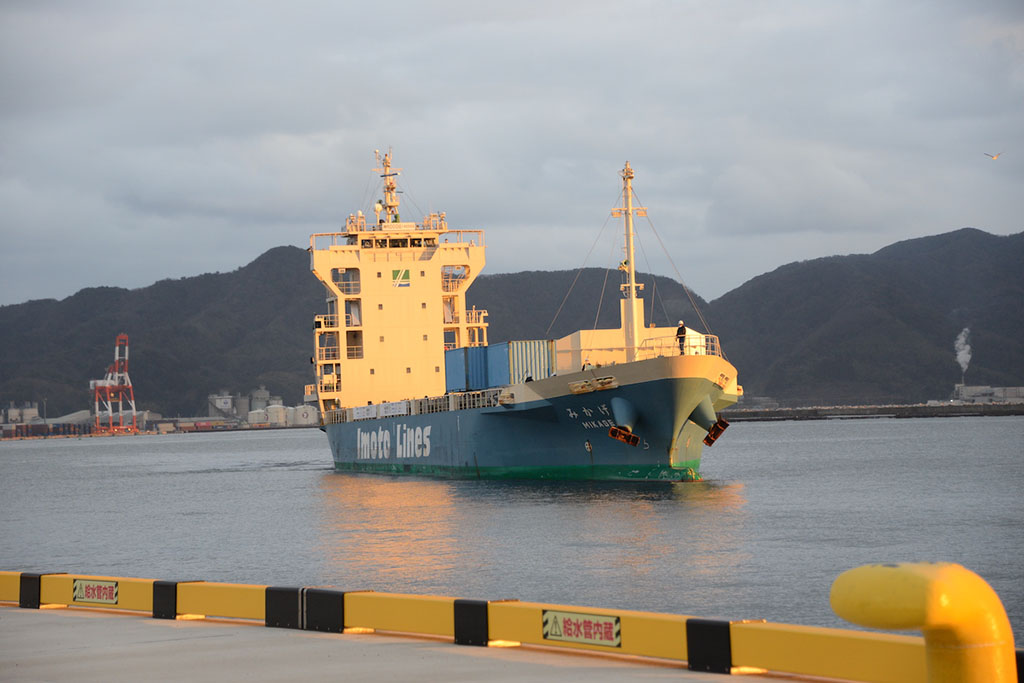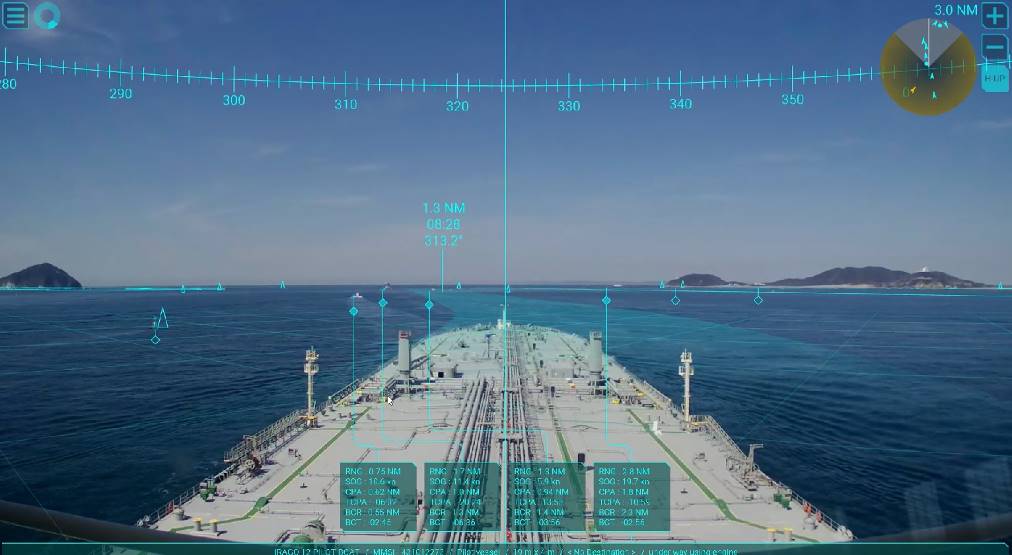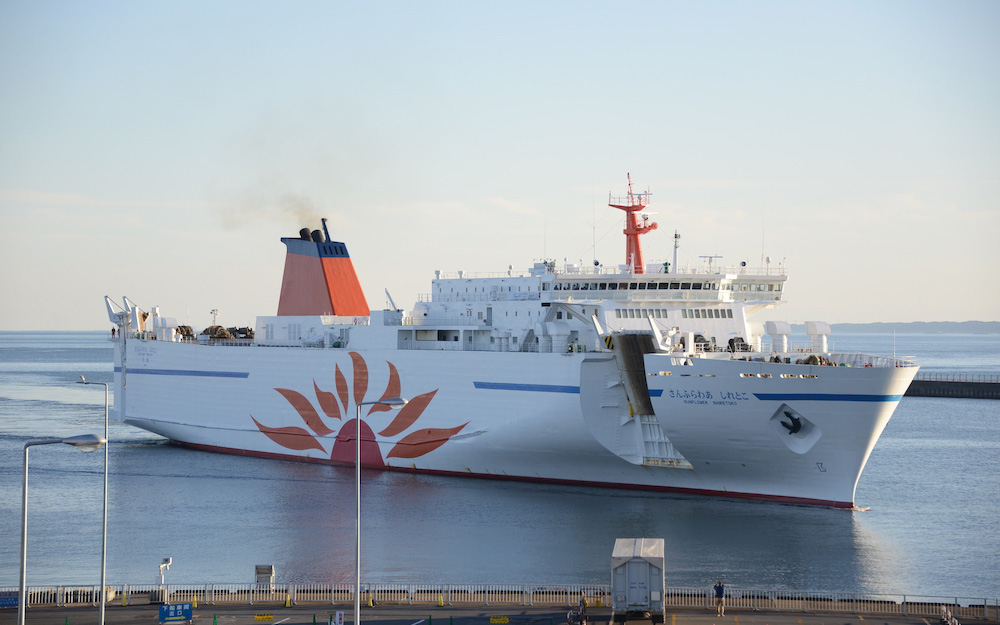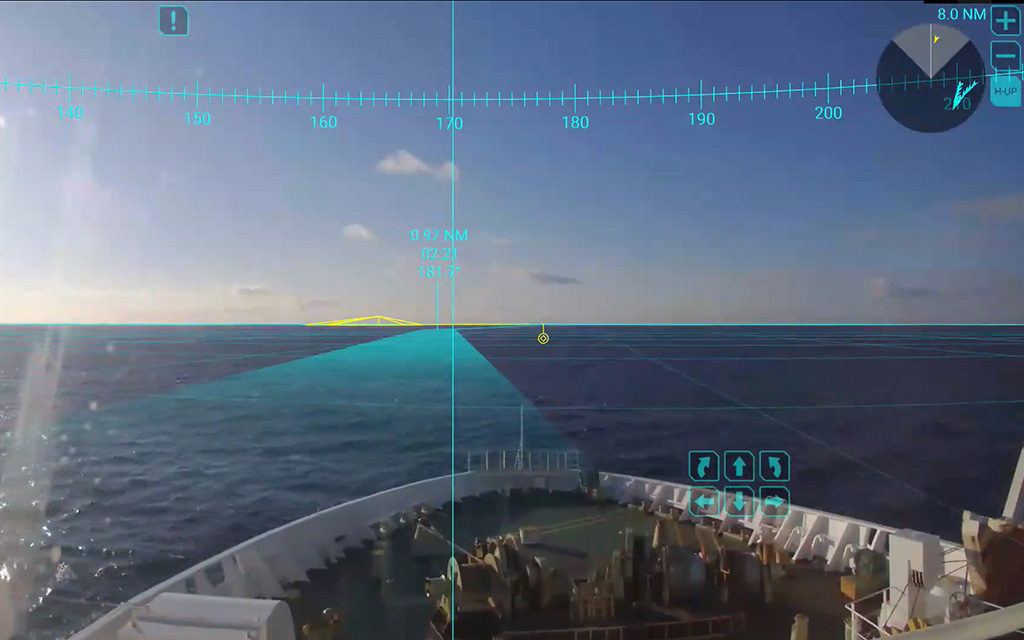3rd and 4th Demonstration Tests of Fully Autonomous Ship Navigation Successfully CompletedSeen leading to improved safety at sea
The third and fourth demonstration tests of The Nippon Foundation MEGURI2040 Fully Autonomous Ship Program, launched by The Nippon Foundation in February 2020 through support for five consortia, were successfully carried out in late January and early February. Fully autonomous navigation is expected to help address numerous maritime issues including crew shortages and accident prevention, and also holds potential as a “future industry” that can demonstrate to the world Japan’s advanced technologies in areas like artificial intelligence, information and communications technology, and image analysis.
In the third demonstration test, carried out on January 24-25, the fully autonomous domestic container ship Mikage navigated a 270-kilometer sea route from Tsuruga, Fukui Prefecture, to Sakaiminato, Tottori Prefecture. In addition to being the first time for an operating container ship to use fully autonomous navigation, the test marked the first use of drones for mooring operations (securing the vessel to a wharf with ropes). The fully autonomous navigation system, drone-assisted mooring operations, and augmented reality (AR) navigation system for monitoring from land developed for this project are expected to contribute to greater ship safety and reduce crew workloads.


Container ships of roughly the Mikage’s size (gross tonnage 749 tons) play an important role in coastal transport in Japan, accounting for roughly 10% of coastal vessels in operation. At the same time, the length of their voyages combined with crew shortages places a significant burden on crew members. This successful demonstration of fully autonomous operation of an operating container ship paves the way for future technological applications that will address the issues of crew shortages and crew workloads, and also contribute to the reduction of operating costs.
For this demonstration test, the Mikage was equipped with a system developed using artificial intelligence to “teach” the ship to detect other vessels with an automatic identification system (AIS) and radar, as well as visible light cameras and infrared cameras for use at night. A fully automated navigation system was also developed to avoid collisions based on the movements of other ships, and this was successfully demonstrated as well. In addition, a system using unmanned drones was developed to haul the heaving lines that secure the ship to the wharf, reducing the work required of crew during mooring. Fully autonomous navigation requires monitoring from land, and this was done with a system that used AR technology to superimpose information sent from the ship onto a screen.

In the fourth demonstration test, carried out on February 6-7, the large car ferry Sunflower Shiretoko traveled a distance of 750 kilometers over roughly 18 hours, from Tomakomai, Hokkaido, to Oarai, Ibaraki Prefecture, marking the world’s longest successful demonstration of fully autonomous navigation in terms of both distance and time. Technologies developed for this project included an automated berthing and unberthing system and an AR navigation system for monitoring from land, which will contribute to improved safety and reduced workloads for ships’ crews.


For this test, the Sunflower Shiretoko, a large car ferry (190 meters, 11,410 gross tons) operated by MOL Ferry Co., Ltd., was equipped with a fully autonomous navigation system. Large car ferries transport both cargo and people simultaneously, and play an important role in domestic logistics, with marine transport handling more than 80% of logistics between Hokkaido and the Kanto region in particular. At the same time, the number of domestic passenger ferry crew members has declined by 30% since 2000, to roughly 7,000 from roughly 10,000,* and the length of car ferry voyages creates workload issues for the crew. The success of this demonstration test over a long distance and long time is expected to help reduce both crew workloads and operating costs.
- * According to Ministry of Land, Infrastructure Transport and Tourism, Maritime Bureau data.
To detect other ships, the vessel was equipped with a fully autonomous navigation system developed using artificial intelligence to “teach” the ship to detect other vessels, using information from an automatic identification system and radar, as well as visible light cameras and infrared cameras for use at night. Algorithms were also developed to avoid collisions with other ships. As these vessels will need to be monitored from land, an AR navigation system was developed using AR technology to superimpose various information onto images sent from the vessel.
Comments
Mitsuyuki Unno, Executive Director, The Nippon Foundation
The Mikage arrived in port safely this morning after completing an overnight voyage through wind and waves. Although the demonstration test was successful, there are still issues to address, including crew shortages and the aging of crew members. Building on the success of this test, we aim to see fully autonomous navigation implemented in Japan by 2025, and to play a leading role in creating international rules for its use.
Roughly 80% of the logistics between Hokkaido and the Kanto region is carried out by sea, and the route taken by the Sunflower Shiretoko is considered an important logistics route. We have high hopes for the use of fully autonomous navigation for large ferries that sail long distances for long periods of time by making a significant contribution to reducing crew workloads on these important routes.
Makoto Yamaguchi, Executive Officer, Mitsui O.S.K. Lines, Ltd.
The Mikage’s successful voyage in the natural environment of the ocean is the result of everyone involved overcoming many difficulties. We were fortunate to have good weather, and I am very glad that people were able to see the inside of the Mikage. Through this project, Mitsui O.S.K. Lines aims to eliminate human error and reduce accidents.
The Sunflower Shiretoko’s demonstration test from Tomakomai Port in Hokkaido to Oarai Port in Ibaraki Prefecture was the first time fully autonomous navigation has been employed for18 hours over a distance of approximately 750 kilometers. Mitsui O.S.K. Lines will continue to develop technologies address crew shortages and reduce human errors. I hope that today’s demonstration gave you a sense of the future of shipping.
Related News
Contact
Public Relations Team
The Nippon Foundation
- Email: cc@ps.nippon-foundation.or.jp



